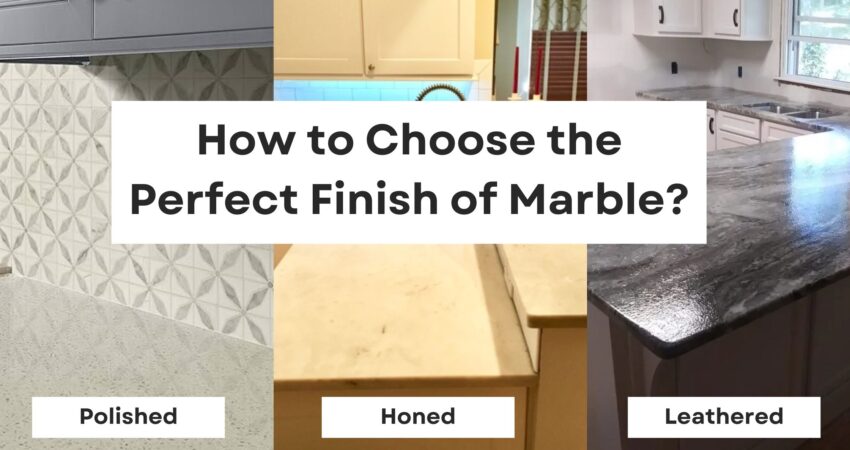Marble is a timeless material used in design for centuries. One critical choice that affects both the appearance and functionality of marble is the finish. Marble offers unique beauty, durability, and adaptability in various applications. Whether you’re selecting Egyptian marble for countertops, flooring, or wall cladding, the right finish can enhance its appearance and durability.
The three main types of finishes for marble—polished, honed, and leathered—each bring unique qualities to the stone. In this blog, we’ll explore them, their best applications, and how to choose the perfect one for your project.
Understanding Marble Finishes
A marble finish refers to the surface treatment applied to the stone to create a specific texture and shine. The finish affects the marble’s look, feel, and resistance to wear. This makes choosing the right finish important, especially for areas with specific needs, such as marble flooring in high-traffic areas or marble countertops in kitchens.
Quick Fact: According to design reports, 80% of homeowners consider the finish of marble before purchasing, as it directly impacts durability and maintenance.
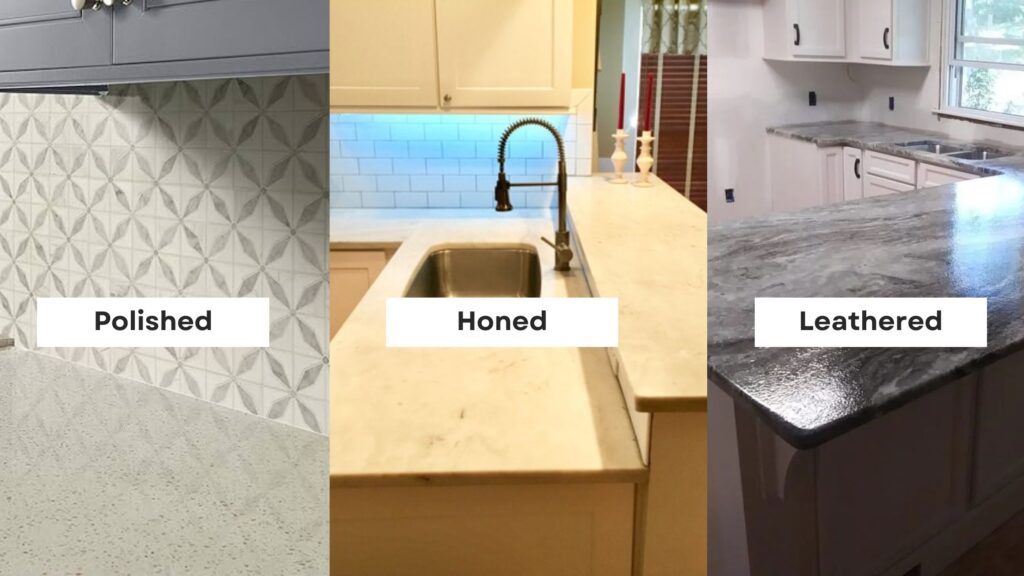
Explore The 3 Main Marble Finishes:
1. Polished Surface
A polished marble is perhaps the most recognizable and popular in marble designs. It gives the marble a glossy, mirror-like surface that reflects light beautifully, highlighting the stone’s natural patterns and colors. Polished marble is achieved by grinding and buffing the surface until it’s smooth and shiny.
- Appearance: High-gloss, shiny, and reflective
- Texture: Smooth, mirror-like surface
- Best Applications: Countertops, wall cladding, and decorative surfaces
Advantages of Polished Surface
- Enhances Color and Veining: Polishing brings out the natural colors and veining in Egyptian marble, making it ideal for projects where visual appeal is a priority.
- Resistant to Stains: Polished marble has a low absorption rate, making it more resistant to stains. This makes it a good choice for kitchen countertops and bathroom vanities.
- Easy to Clean: The smooth surface is easy to wipe clean, which is convenient for high-use areas.
Drawbacks of Polished Finish
- Susceptible to Scratches: The polished surface can scratch more easily than others, so it’s not ideal for high-traffic flooring.
- Slippery When Wet: Due to its glossy surface, polished marble can be slippery, especially if used on flooring in areas prone to moisture.
Statistics: A survey of interior designers found that 70% of them recommend a polished marble for countertops and decorative pieces due to its beauty and easy maintenance.
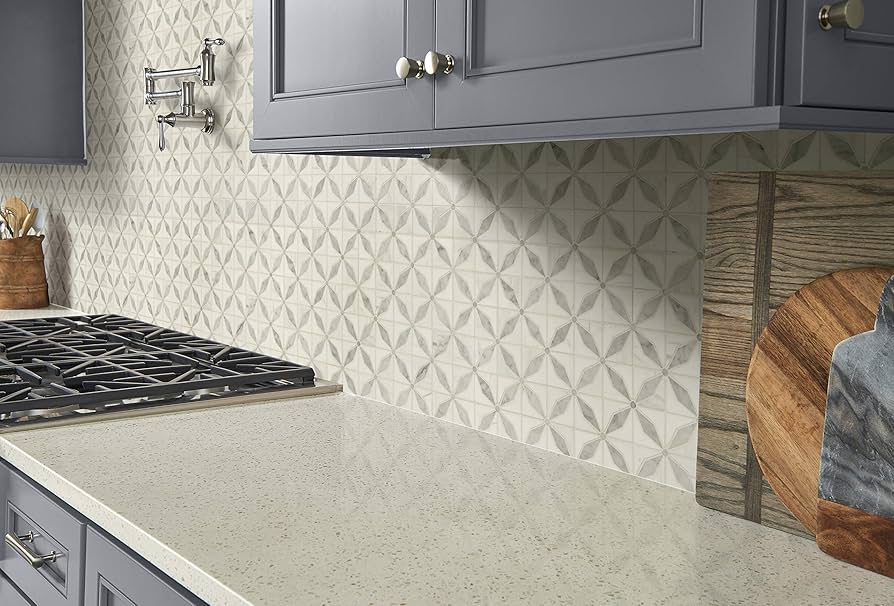
2. Honed Surface
A honed marble has a matte or satin-like appearance that gives the marble a smooth, soft look without the reflective quality of a polished one. This finish is achieved by grinding the surface to a flat, smooth surface without buffing it to a shine. It’s subtle and understated, perfect for a modern and classic look.
- Appearance: Matte or satin-like, non-reflective
- Texture: Smooth but non-glossy
- Best Applications: Flooring, wall cladding, bathroom surfaces, and high-traffic areas
Advantages of Honed Marble
- Less Prone to Scratches: The matte appearance hides scratches better than polished marble, making it ideal for high-traffic flooring and other frequently used surfaces.
- Slip Resistance: Since it’s not as slippery as polished marble, honed marble is safer for flooring, especially in areas prone to moisture, like bathrooms.
- Soft, Elegant Look: Honed marble provides a more subtle look, perfect for contemporary or minimalist designs.
Drawbacks of Honed Surface
- Prone to Staining: Unlike polished marble, honed marble can absorb liquids and stain more easily. It needs regular sealing to prevent this.
- Doesn’t Highlight Color as Much: The matte surface doesn’t enhance the color and veining of the stone as much as a polished finish does.
Statistics: According to building industry reports, 50% of commercial spaces with marble flooring use a honed marble because it’s more resistant to wear and less slippery. Know more about Honed marble through this blog: 4 Reasons Make Honed Marble the Ultimate Choice for Homes and Offices?
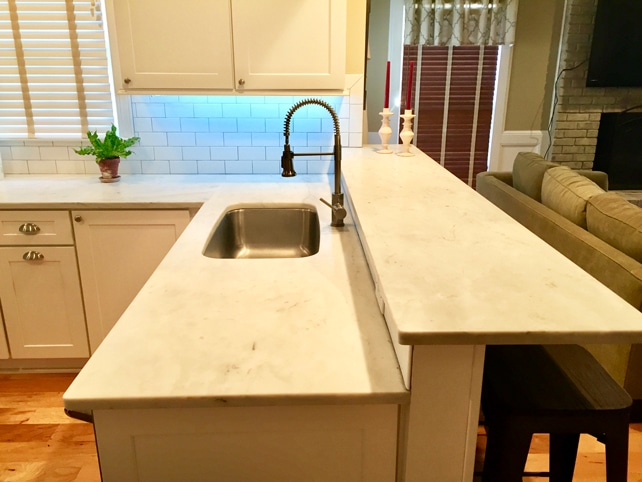
3. Leathered Surface
A leathered marble is less common but gaining popularity for its unique texture. It’s created by brushing the marble surface to add texture while still preserving a degree of smoothness. This finish has a slightly raised, tactile surface with a soft sheen. It’s often used for darker stones, as it enhances their natural beauty.
- Appearance: Soft sheen with a textured, tactile surface
- Texture: Textured, slightly rough
- Best Applications: Countertops, accent walls, and areas where a unique texture is desired
Advantages of Leathered Surface
- Hides Fingerprints and Smudges: The texture of a leathered surface is less likely to show fingerprints, smudges, or water spots, making it low-maintenance.
- Unique, Natural Look: Leathered marble has a more organic, natural feel that enhances the beauty of natural stones like Egyptian marble.
- Good Grip: The textured surface makes it a safer option for areas where slip resistance is important.
Drawbacks of Leathered Finish
- More Difficult to Clean: The texture can make it harder to wipe clean than polished or honed marble, especially in high-use areas.
- Limited Availability: Leathered finishes are less common and may not be available for all types of marble.
Quick Fact: Demand for leathered finishes has increased by 30% in the past five years, particularly for high-end kitchen countertops where a unique texture is desired.

Choosing the Right Finish for Your Project
Selecting the right marble finish depends on the specific application, location, and desired look. Here are some practical tips for choosing the perfect finish for Egyptian marble.
1. Consider the Location
- High-Traffic Areas: For flooring in high-traffic areas, like hallways and commercial spaces, a honed marble is ideal due to its resistance to scratches and slip-resistant surface.
- Wet Areas: In bathrooms or outdoor areas, honed or leathered are safer as they are less slippery when wet.
- Countertops: Polished and leathered work well for countertops. Polished marble enhance color, while leathered one offer a unique texture and resist smudges.
2. Think About Maintenance Requirements
Each one has different maintenance needs. Polished marble is easy to clean but shows scratches, while honed marble may require more sealing to prevent staining. Leathered marble hides marks but can be trickier to clean.
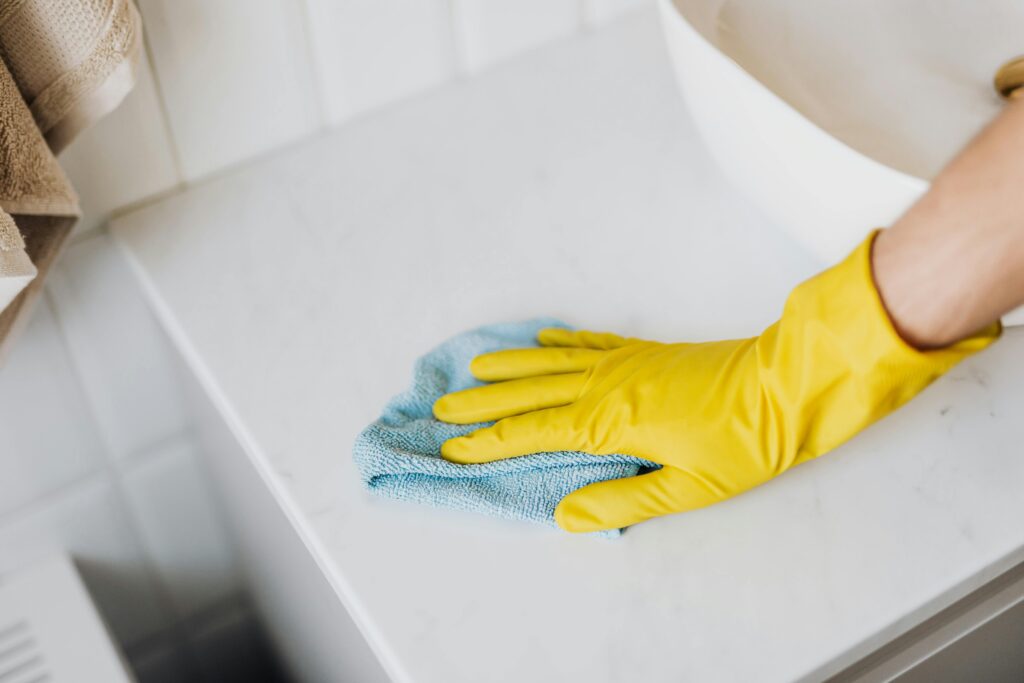
3. Match the Finish with Design Style
The right finish can enhance the design style of a space:
- Polished Finish: Ideal for luxurious, traditional, or modern designs that emphasize elegance.
- Honed Finish: Suits minimalist, contemporary, or rustic styles with a softer, matte appearance.
- Leathered Finish: Complements industrial, modern, or eclectic designs, adding a unique tactile element to the stone.
The Role of Egyptian Marble in High-Quality Finishes
Egyptian marble has earned a reputation worldwide for its remarkable beauty, exceptional quality, and versatility in finishes, making it an ideal material for premium design and architectural projects. This natural stone can be crafted into various appearances that suit a wide range of aesthetics and functional needs, bringing sophistication and charm to any space.
One of the most sought-after finishes for Egyptian marble is the polished one, which enhances the stone’s natural luster and gives it a luxurious, mirror-like appearance. Polished Egyptian marble is commonly used in high-end interiors, from opulent hotel lobbies to prestigious residential spaces, where its striking shine and refined appeal create a lasting impression.
For those seeking a more understated look, the honed offers a smooth, matte surface with subtle elegance. This finish is particularly suitable for floors, walls, and countertops, providing a refined look without the high-gloss effect. Honed Egyptian marble is popular in modern and minimalist designs where a soft, natural aesthetic is preferred.
In addition, Egyptian marble can be crafted with a leathered marble, which gives it a unique, textured feel. This finish combines visual interest with tactile appeal, making it a popular choice for countertops, fireplaces, and accent walls. The leathered finish also has practical benefits, such as enhanced stain resistance, which adds to its value for high-traffic areas and functional surfaces.
Statistics show that Egypt supplies over 8% of the world’s marble, positioning it as a key player in the international stone market. The quality and versatility of Egyptian marble allow it to compete with other major suppliers, solidifying its place in high-end projects worldwide.
The range of finishes available in Egyptian marble allows architects, designers, and homeowners to choose the perfect style for any setting, from lavish interiors to elegant outdoor spaces. This adaptability enhances its appeal, making Egyptian marble a top choice for projects aiming to balance aesthetics with durability and sophistication.
Sustainability of Different Marble Finishes
Using natural stones like Egyptian marble supports sustainability. Marble is a durable material that requires minimal processing, which contributes to lower environmental impact.
- Honed and Leathered : These finishes absorb less light, which can contribute to cooler indoor environments.
- Polished : While more reflective, polished marble is highly durable, reducing the need for replacements.
Conclusion: Choosing the Perfect Marble Finish
Selecting the right finish for Egyptian marble is about balancing aesthetics, function, and maintenance needs. A polished marble highlights the marble’s beauty, a honed one offers durability and slip resistance, and a leathered finish provides a unique texture and look.
Whether you’re an interior designer, builder, or supplier, understanding these differences helps in creating spaces that are not only beautiful but also practical and sustainable. With the right Egyptian marble can transform any space, adding elegance, durability, and timeless appeal.
Explore the variety of finishes to find the perfect one for your project and elevate your design with the natural beauty of Egyptian marble.
Resources:
